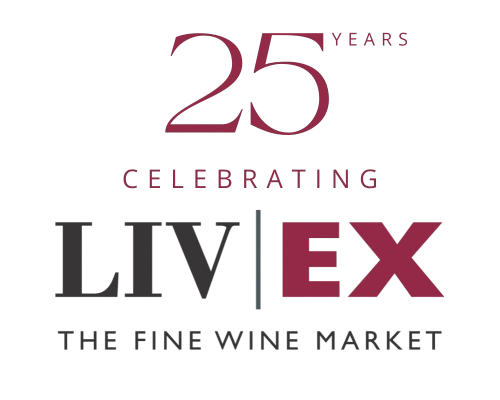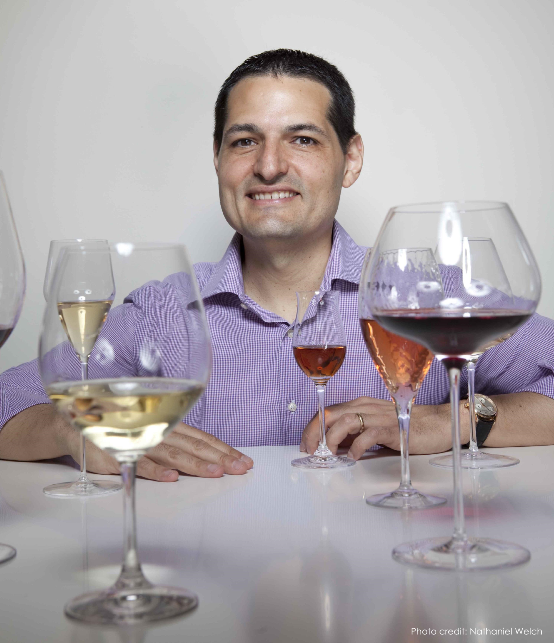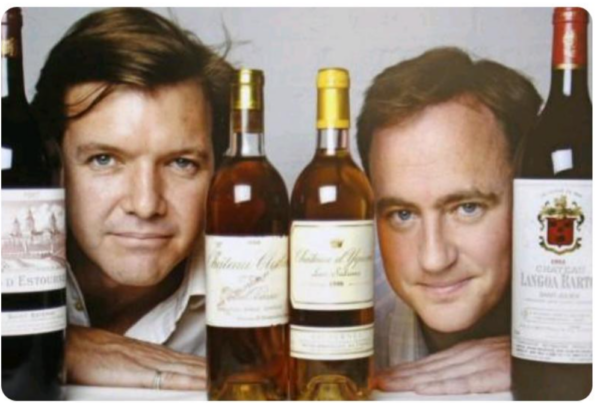On Friday we published the first part of Liv-ex’s interview with Antonio Galloni, wine critic and founder of Vinous. In the second part, published below, Antonio discusses the wines from his favourite regions, the importance of temperature control in cellars, and why Italy is the country with “the brightest future”.
You recently published a report on the 2010 Tuscan vintage where you called it “one of the great all-time vintages in Tuscany”. What is great about the vintage?
The 2010s are some of the most viscerally thrilling, young wines I have ever tasted. I started following the wines from barrel in 2011, and even then, it was pretty clear they had the potential to be special. The best wines have dazzling fruit and plenty of mineral-driven intensity from the late, cool harvest. In my view, the finest 2010s are simply breathtaking. However, it is important to note that Tuscany is a big region and there often are significant differences between the wines of Chianti Classico, Maremma and Montalcino, to name just three of the broader appellations within Tuscany.
How does it compare to other recent ‘great’ years, such as 2009, 2006 and 2004?
Broadly speaking, the 2006s are big, powerful wines built for cellaring. The 2004 are more aromatic, silky in texture and finessed. I consider both exceptional vintages for the majority of top Tuscan properties. I would not put 2009 in the same category. The warm vintage was challenging, especially on the coast, where conditions are already hot to begin with and generally lack the diurnal shifts typical of some of the inland zones, Chianti Classico in particular.
Italy is one the most diverse countries in terms of its different grapes and regions, but the market tends to focus on the top wines of Tuscany and Piedmont. Which other Italian regions should command the market’s attention?
The simple answer is all of them! Here’s a breakdown of some of the highlights, keeping in mind there is something to discover in every region.
Veneto, Valle d’Aosta, Lombardia, Campania, Abruzzo, Umbria, Sicily and Sardinia for reds. Think about the diversity. Amarone is a tremendous wine, yet it gets so little attention. Valle d’Aosta excels with mountain reds built in energy and tension. In Lombardia, the local Chiavennasca (Nebbiolo) is air-dried to produce Sforsato and a number of other wines full with character. The reds of Campania boast a rich history that goes back millennia, well before any chateau was classified in Bordeaux or vineyard awarded Grand Cru status in Burgundy. Montepulciano from Abruzzo ages beautifully. In Umbria, Sagrantino can be compelling when the tannins are handled well. Sicily has Nero d’Avola in a variety of places on the island and Nerello Mascalese on the Etna. Sardinia has Cannonau, Carignane and a host of other indigenous grapes.
Alto-Adige excels with whites that are endowed intense varietal character and pure mineral drive. In Friuli, whites tend to be a little richer in body, but just as compelling, especially at the top properties in the Collio, Colli Orientali and Carso. Campania impresses for its volcanic-inflected whites. High-quality Soave in Veneto is delicious and ages exceptionally well. In the Marche, Verdicchio is equally distinctive and capable of myriad expressions from bone-dry to late-harvest versions that have a little bit of sweetness. Most of the whites in Sicily and Sardinia are quaffers, but there is always a time and place for that as well.
There has been a recent spate of ‘great’ Champagne vintages, of which 2002, 2004 and 2005 are normally included. Have any Champagnes from these vintages stood out for you?
Of those three vintages, 2002 is the most consistently exceptional, as a number of wineries made superb Champagnes. Some of my favorites include Dom Pérignon and Dom Pérignon Rosé, Bollinger La Grande Année and Vieilles Vignes Françaises, Dom Ruinart, Pierre Péters Les Chetillons, Taittinger Comtes de Champagne, Roederer Cristal, Vilmart Coeur de Cuvée, Philipponnat des Goisses and the Jacquesson lieu-dits.
There is a lot to like in 2004 as well. The wines are more focused and less exuberant than the 2002s. Overall, it is a vintage of tightly wound, energetic Champagnes that should age beautifully. Some of my favorites include Dom Pérignon, Roederer Cristal, Bollinger Grand Année, Pierre Péters Les Chetillons, Taittinger Comtes de Champagne, Vilmart Coeur de Cuvée, Philipponnat des Goisses, the Jacquesson lieu-dits, Le Brun Servenay’s Vintage Cuvée Tresor Exhilirante Vieilles Vignes and Cédric Bouchard’s Roses de Jeanne La Haute Lemblée.
Vintage 2005 is by far the most variable of the vintages you mention. A number of wines have begun to show mushroom notes and are aging prematurely. In my view 2005 is an average vintage at best for Champagne. I am not buying any 2005s to cellar.
I am also excited about a number of smaller grower estates, including, Jacques Selosse, Chartogne-Taillet, Marie-Courtin, Georges Laval, Ulysse Collin and Francis Boulard, who don’t necessarily vintage date all of their wines, but who continue to push the envelope with regards to what Champagne is and what it can be.
Does it frustrate you that Italian and Californian wines still don’t get the same attention from the trade and press as the major French regions?
I think that might be true in Europe, but it is not true in the US, especially when it comes of California wine. The simple reality is that most of the top California estates can sell their entire production in the US, so they tend not to seek global markets. Personally, I feel that is a mistake, but it is also understandable.
As we discussed previously, Italian wine is taking off in a big way. It has been the most imported category in the US for multiple years now, and it is about to explode onto the consciousness of collectors in a broader and far more meaningful way than at any other time in the past. The best estates offer superb quality, the wines are more affordable than the top labels in Bordeaux and Burgundy, and far easier to source than the top Burgundies. Take it from someone who has put the best Italian wines on the same table with peers from other regions around the world. Italy’s finest wines are as great as the best First Growth Bordeaux, Grand Cru Burgundies and Napa Valley Cabernet Sauvignons, and they cost a fraction of the price.
Are wineries in California run differently to those in Europe?
Again, California is a world, an agglomeration of regions, each with their own personality. There are smaller, artisan, family-run properties that embody the same values we see in Burgundy, Piedmont and other regions where most of the top estates are still run by families. At the other end of the spectrum, California has also attracted a number of successful entrepreneurs (mostly in Napa Valley), who will make totally economically irrational decisions in search of excellence. The biggest difference to me is in technology, where California wineries tend to invest heavily. It is not unusual for a Napa Valley estate to employ a vineyard manager, a vineyard consultant, a winemaker a consulting winemaker and any number of other experts specializing in soil analysis, irrigation and more. The sorting lines are million-dollar pieces of equipment. And of course, the great irony is that none of the iconic wines of decades past in Napa Valley or anywhere in the world were made with that type of technology.
In my view, the most important thing at this moment in time is the ability to control temperature in the cellars. I don’t think I have seen a winery in California with passive winemaking and aging cellars, but this is still the case in parts of Europe. Burgundy, Piedmont and Tuscany come to mind. I remember a grower in Burgundy telling me his 2002s were adversely affected in barrel by the scorching heat of 2003. What a shame. Given the extreme volatility in weather today, passive cellars are simply no longer viable for the production of world-class wines. Of course, there are exceptions, but there are many more wines that aren’t reaching their full potential because of a lack of temperature control. Tuscany is one of the biggest culprits, largely because of a cultural aversion to air conditioning. A few months ago, a winemaker in Tuscany told me he was disturbed by the cultural aesthetic of having cooling equipment in his cellar. So he chooses to ‘refresh’ his oxidized wines with a younger vintage before bottling. The same is true of the conditions where wines are stored at wineries. The lack of temperature control is the main reason so many Tuscan wines fall short of the level they could and should reach.
Sadly, the same is true of restaurants, where storage conditions aren’t often up to the level of the wines. Over the summer, at a restaurant with a Michelin star, I was served a bottle of San Pellegrino, chilled from the refrigerator, and a bottle of Le Pergole Torte at 27 degrees Celsius (81 degrees Farenheit)! It saddened me deeply to see a bottle of water treated with more respect than one of the world’s great, icon wines. Yet this too often is the reality. It’s time for Italy’s restaurants to get serious about their wine programs. The world is watching.
What impact do you think that wine critics have on both the market and on growers?
Although critics might have some impact over the short-term, I believe markets as a whole are pretty efficient over the long-term. That is why some cult wines that are rarely reviewed are highly coveted, with prices to match, while other wines struggle to keep their value over time, high scores notwithstanding. When that happens, the market is telling you those wines are overpriced given their quality.
I firmly believe it is not a critic’s role to tell growers – or even suggest by way of commentary/criticism – how to make wine. Any sense of giving direction to growers is completely antithetical to my philosophy.
In the last couple of years Liv-ex has begun to see broadening interest for wines beyond Bordeaux. Have you? If so, where do you think the emphasis lies?
There is no question Italy is the country with the brightest future and the greatest upside for the next 20+ years. The actuality is that very few consumers can actually afford to drink Bordeaux, particularly the best wines. In addition, the world of restaurants has moved swiftly to more informal settings. How many occasions are there to enjoy a great First Growth? I love Bordeaux for its classicism and timelessness, but there is little question the region needs to re-connect with consumers to remain relevant. Bordeaux has priced itself out of restaurant wine lists, and very few people can afford to drink these wines even at home.
The best Burgundies are made in tiny quantities, so unless something dramatic happens to the global economy (let’s hope it doesn’t!) the market for those wines will remain very strong. California benefits from a huge domestic market and wines that are mostly labeled by variety (Pinot Noir, Chardonnay, Cabernet Sauvignon) that are therefore intrinsically easier to understand.
Italy has something no other country has. The most coveted and desired lifestyle of all. As people increasingly seek to eat healthier foods they turn to the Mediterranean diet. That means olive oil over butter and a generally more ingredient-focused cuisine. I love Burgundy, but the food is heavy. Italian food is food you can eat every day. And you need something to drink. Italy offers a superb, dynamic and varied culinary repertoire with world-class wines to match. This is Italy’s greatest strength, and no other region matches it, to be frank, except for California, which has a great food and wine culture. Italy needs to improve its messaging to the trade and ultimately the consumer, but the raw potential for growth is enormous.
What wines do you like to drink at home?
I usually choose what we are going to drink based on who is coming over for lunch or dinner and what I think our guests will enjoy. That is why I like having a diversified cellar. When it is up entirely to me, we drink a lot of Champagne, white and red Burgundy, California Pinot and Cabernet Sauvignon, and Sangiovese and Nebbiolo-based reds. I am looking for purity, focus and transparency in wines to pair with the food we like to cook at home, which is simple and obsessively ingredient-focused.




